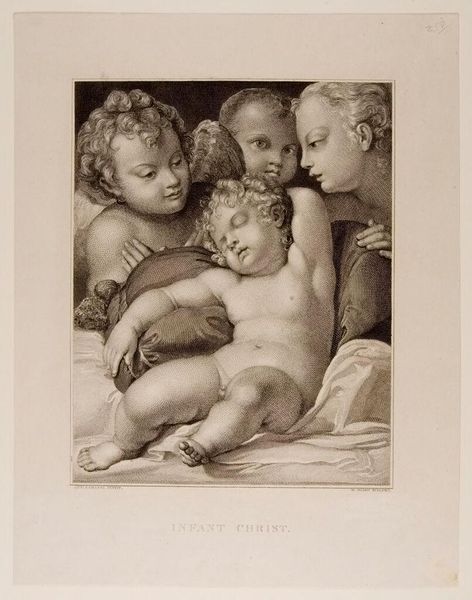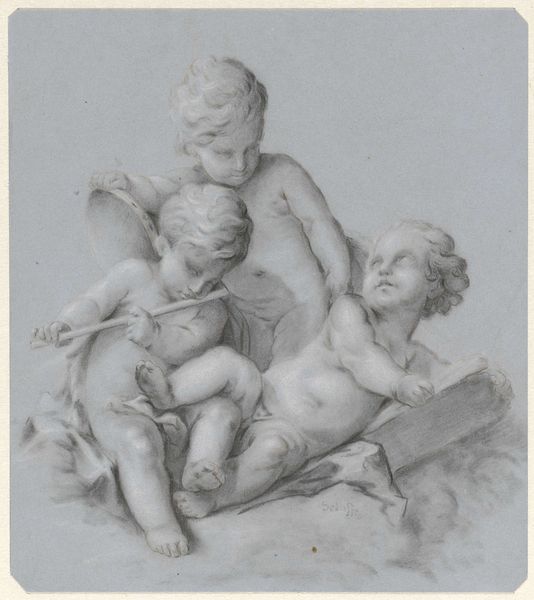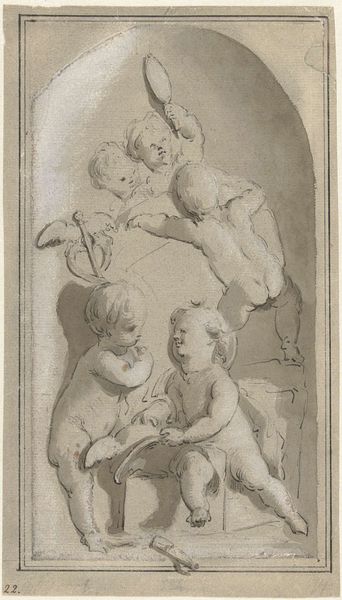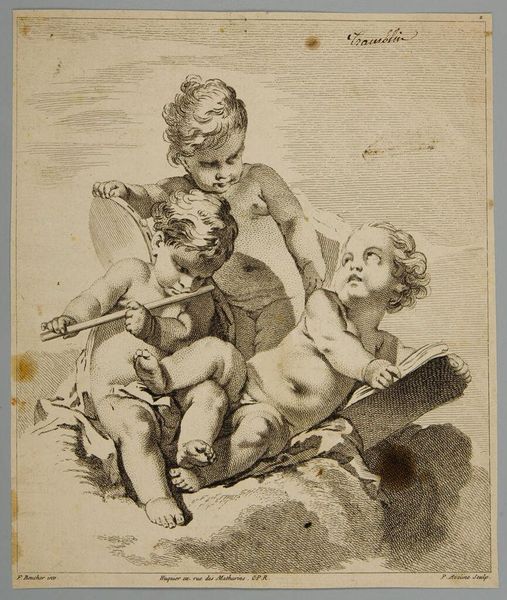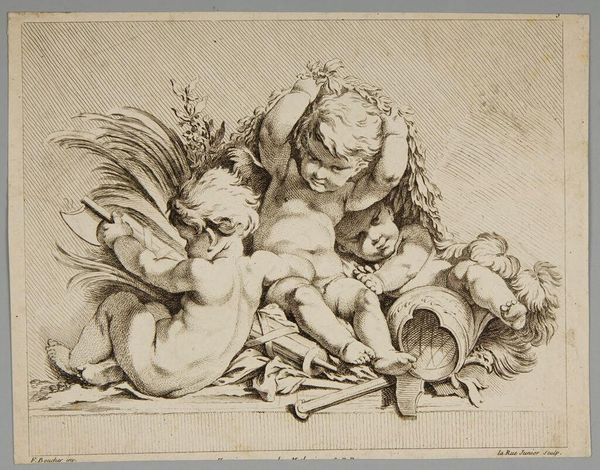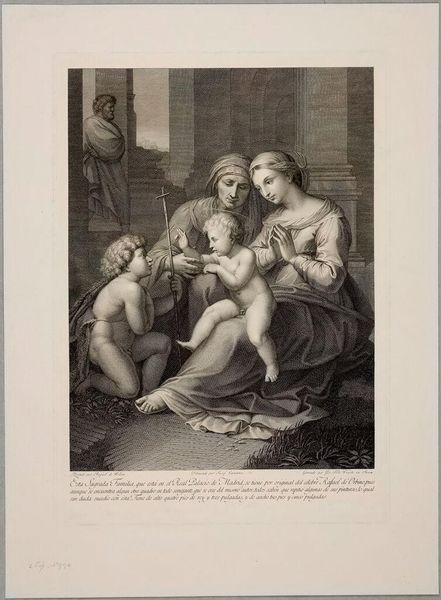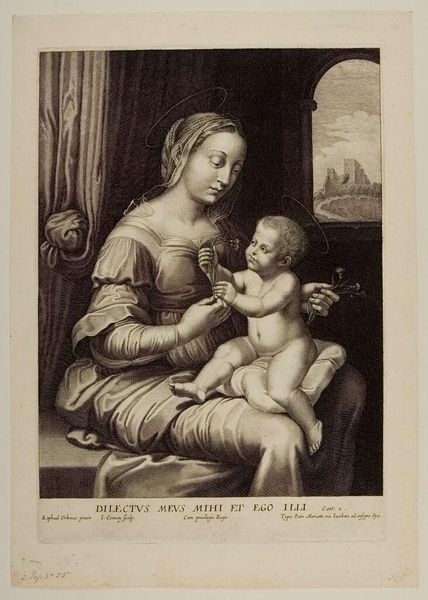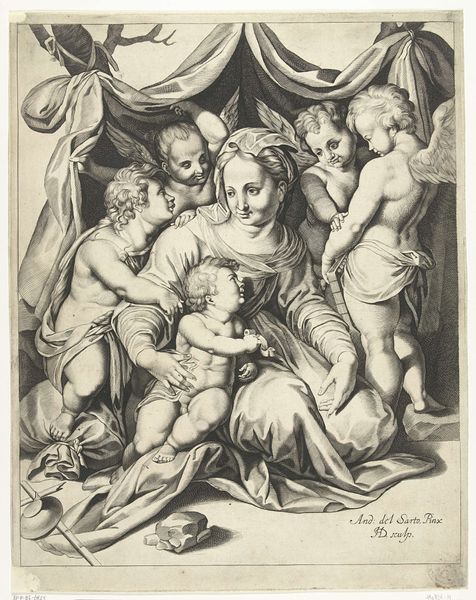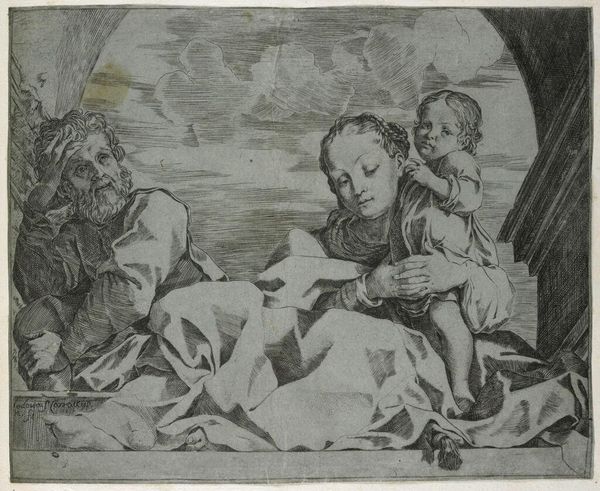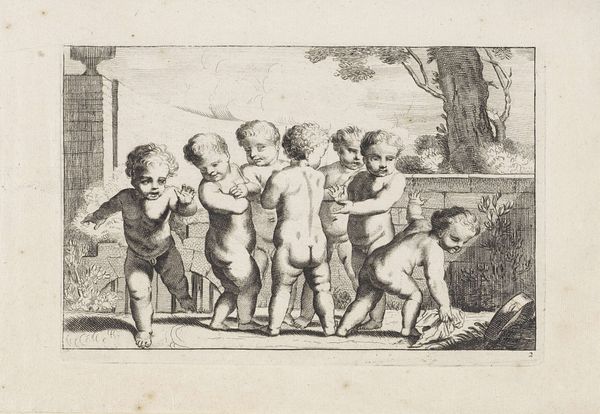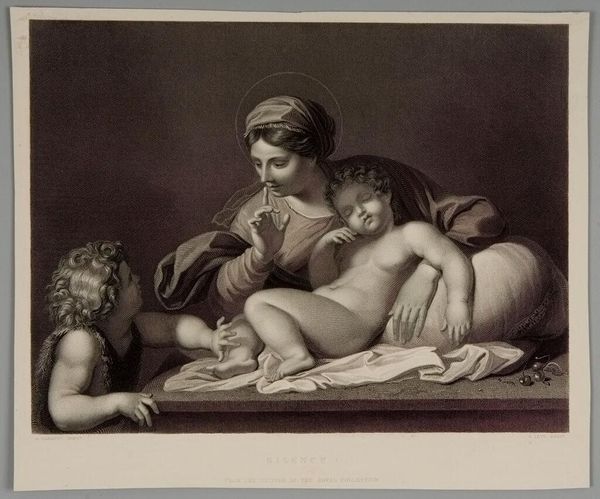
Copyright: CC0 1.0
Curator: This is an untitled painting by Joseph Wagner, who lived from 1706 to 1780. It's currently held at the Harvard Art Museums. Editor: My first impression is one of charming, almost cloying, artifice. The cherubic figures are arranged in a deliberately pleasing composition, aren't they? Curator: Indeed. Wagner's work often reflects the Rococo period's fascination with idealized scenes of leisure and play. The cherubs, symbols of innocence and beauty, are presented here almost as actors in a staged drama. Editor: The monochrome palette forces us to focus on the figures’ poses, the soft light, and the textures of skin and drapery. It's a carefully constructed visual experience. Curator: Absolutely, and consider the cultural context. Wagner was working in a time of aristocratic patronage. These images helped reinforce ideals of beauty, virtue, and order, serving as aspirational models for the upper classes. Editor: It's hard to ignore how deliberately the figures are placed and how that staging influences the viewer's perception. Curator: This artwork invites reflection on how artistic vision serves, and is served by, the social milieu. Editor: For me, it speaks of the aesthetic choices that shape our perception and emotional engagement.
Comments
No comments
Be the first to comment and join the conversation on the ultimate creative platform.

